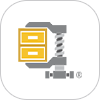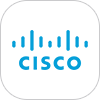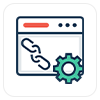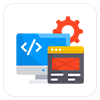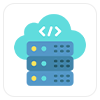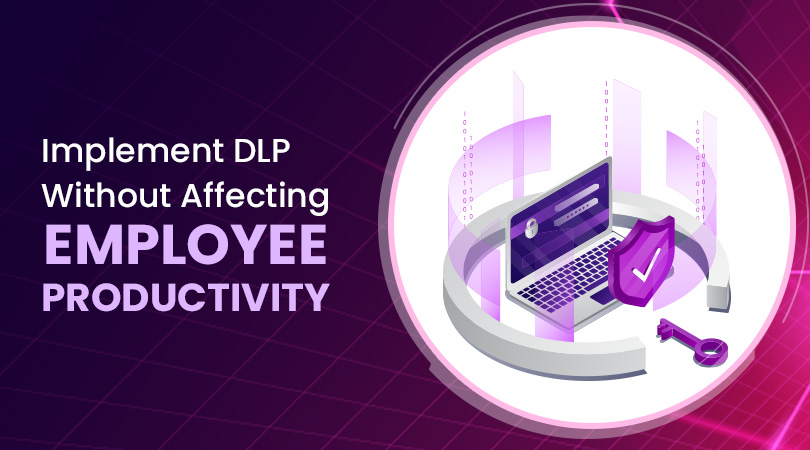
Data Loss Prevention (DLP) software is quite crucial for the cybersecurity stack. Sensitive data (customer, employee, intellectual property, etc.) needs to be protected! As a user, DLP can be interrupting because it has the potential to disrupt workflow, create friction within employees’ jobs, and detract from productivity. Data protection is key, but achieving that protection while also being aware of user workflows is important to a company’s success. A strong DLP solution will satisfy both aspects of protecting data while causing little disruption in an employee’s day-to-day routine.
This blog outlines steps to take when implementing DLP to achieve productivity, rather than hindering it, while also providing security.
Strategies for Implementing DLP Without Damaging Productivity
There are many ways to implement DLP while preserving productivity for employees effectively:
-
Data Discovery and Classification
Before implementing DLP policies, it is essential to identify what sensitive data your organization has, where that data is stored, and how it is used. Utilize data discovery and classification tools to discover and classify sensitive data automatically. This will help you understand the data your organization is concerned about, so you can decide what’s really sensitive and what must remain secure.
Impact on Productivity – the first phase will mostly be a background process and will not affect employee workflows in any significant way. You will have a more informed view of the data your organization has, which will enable you to implement targeted policies that cause less friction for employees in the future.
-
Focus on Education and Awareness
Transparency is key. Before deploying DLP policies, inform employees about why you are establishing DLP, what data is available to them, and general principles they need to follow. This develops an environment of security awareness and could help reduce accidental violations of policy.
Impact on Productivity: While employee training may initially take time, the investment will decrease friction later for the employee and encourage compliance with policies.
-
Deploy Policies in Phases and with Iteration
Do not deploy DLP policies all at once; phase them. For a kick-off period, start just with monitoring and alerting if there are potential policy violations, but not blocking your employees’ actions. This will allow you to see what behaviors are actually happening, adapt your policies based on real-world situations, and decrease the number of false positives that you will need to uncover before you enforce any policies.
Impact on Productivity: A gradual rollout and phase of monitoring allows employees to change security behaviors more gradually and more productively.
-
Fine-Tune Policies with Contextual Awareness
Leverage DLP products that have contextual awareness as part of them. These products can understand not just the data itself but also know about the user, the application, the time, and the destination of the data. Context-aware policies tend to be more intelligent and less likely to flag a legitimate activity. For example, one policy might allow an employee in Finance to email a financial report to their manager, but flag it if the same employee tried to do that to an external personal email outside of their department.
Impact on Productivity: Context-aware policies can eliminate false positives and allow for finer control, which minimally disrupts legitimate workflows.
-
Clarify Exceptions and Requirement Processes
Ensure staff are clear on what is permitted and what is not. It is also important to have a process to request exceptions that legitimately fall outside of a policy, to either meet a legitimate business Need DLP Software requirement or need from an employee perspective. Knowing what the limits are can limit frustration.
Impact on Productivity: Clear guidelines give employees the ability to work within the boundaries, and an exception process means that when there is a legitimate need for a deviation, their work doesn’t just stop.
-
Use User Feedback and Iterate
DLP implementation should not be a one-off project. Get the views of employees about their experiences with the DLP system on a regular basis. Use those views and couple them with the data on policy violations and false positives to adapt and improve your policies and configurations over time.
Impact on Productivity: Regularly requesting and acting on user feedback will ensure the DLP system evolves in a secure and user-friendly manner, so the ongoing productivity impact is minimal.
-
Intent and Education, not just Block
Where possible, configure DLP to provide information messages to employees when a policy violation is detected, where you block something, but also tell the employee why it was blocked and how the data should be dealt with correctly. This educational approach is a better long-term solution than just blocking the action without any context.
Impact on Productivity: Educative blocking enables employees to understand and modify their behavior, resulting in fewer future violations and a reduction in IT involvement.
-
Selecting the Right DLP Application to Support Productivity
The technology application itself (the actual DLP software) has an impact on productivity. As an example, solutions with high accuracy, layered and granular policy, low learning curves for people’s work (or business) processes, reliable reporting that contributes to policy tuning, etc., are highly attractive. The best DLP software will have technological features that mitigate false positives and automate policy management.
Impact on productivity: Selecting a user-friendly and operationally practical DLP solution right now can help prevent or minimize a number of productivity-related issues.
The Long-Term Productivity Advantage
A data breach can include lost time of closure, providing braking/impact/disturbance to the continuity of business, disruptive litigation efforts, distractions (team calendars), and of course negative or substantially built erosion of the continuity industry reputation and time-relentless effects of eroding lost customer trust – this has far greater productivity/negatives than the cost of starting a DLP program.
When organizations take a thoughtful and user-centric approach to DLP implementation, employees can develop a security-aware culture without limiting productivity. The goal is to shift the focus to understanding your data, creating awareness for your people, implementing policies incrementally and in context, and using feedback and experience for continuing improvement. The balance between security and productivity can be mastered to create a safer organization and, in the end, a more productive one.




















































